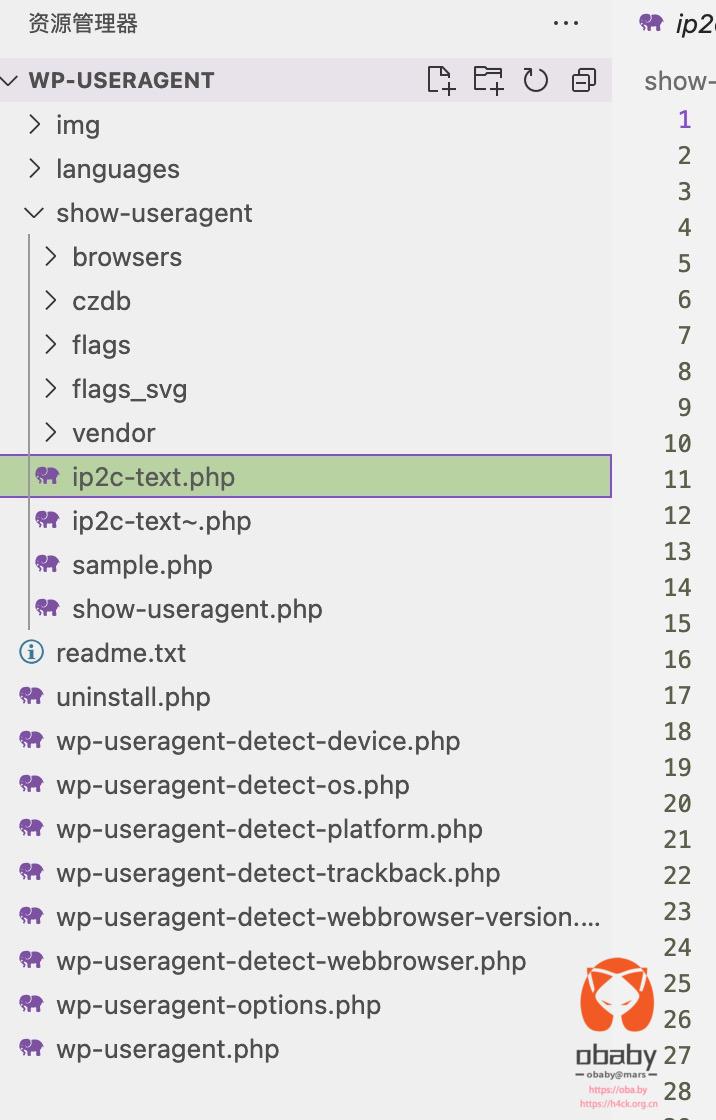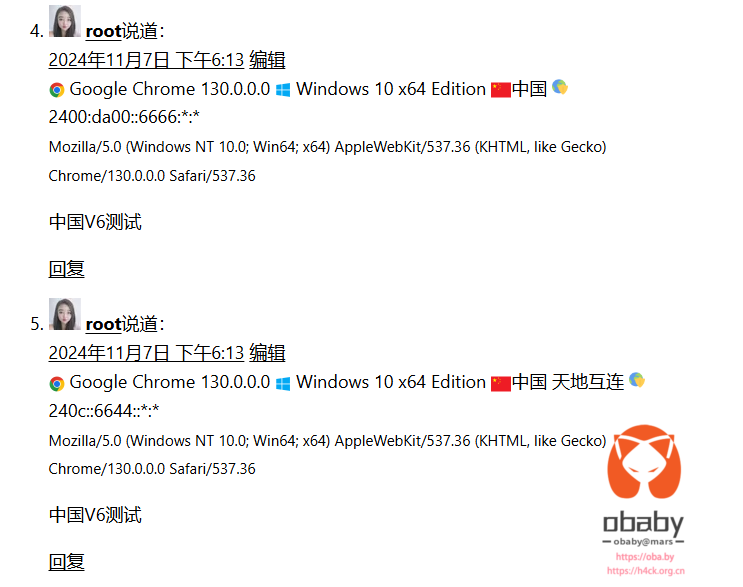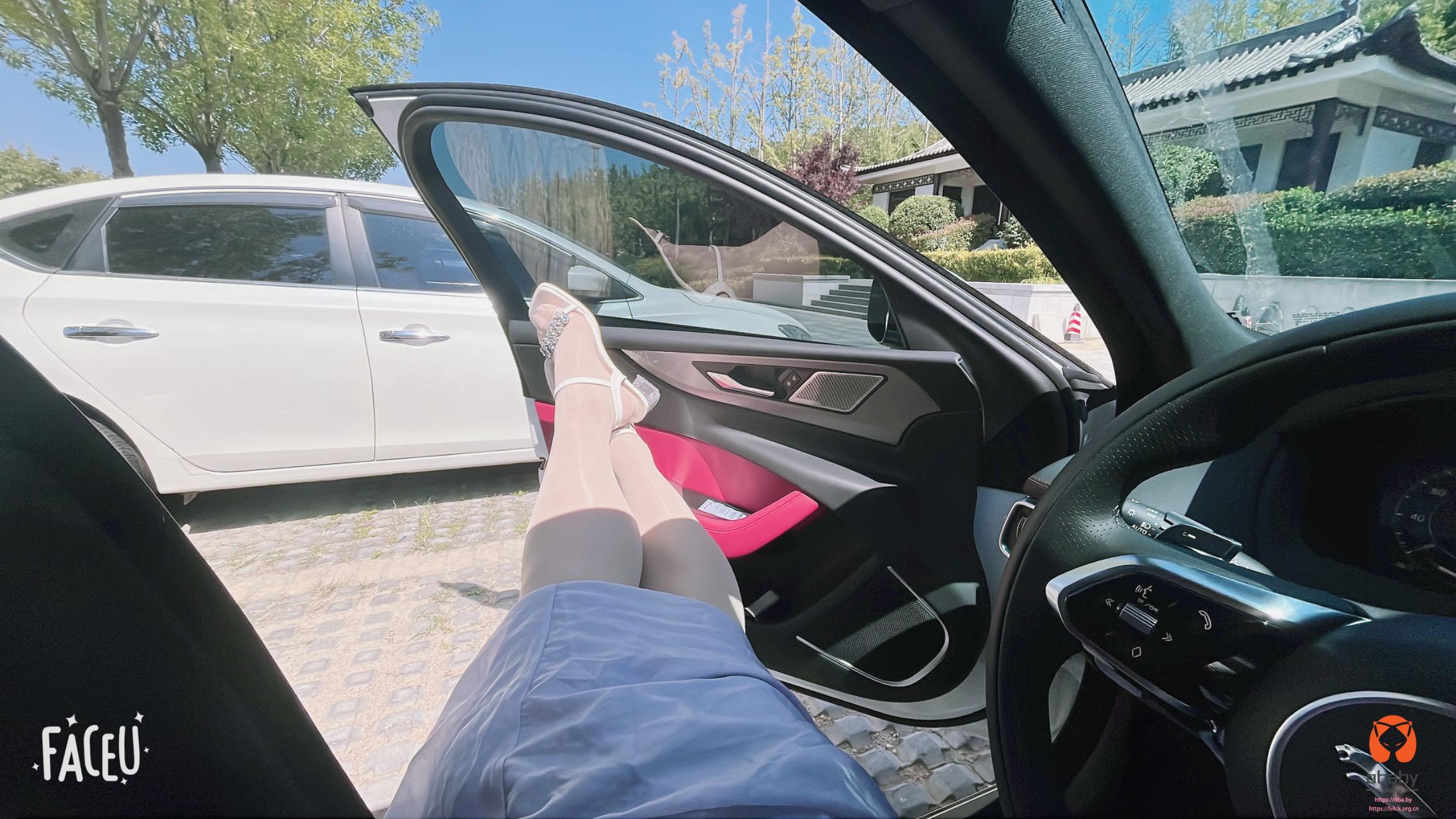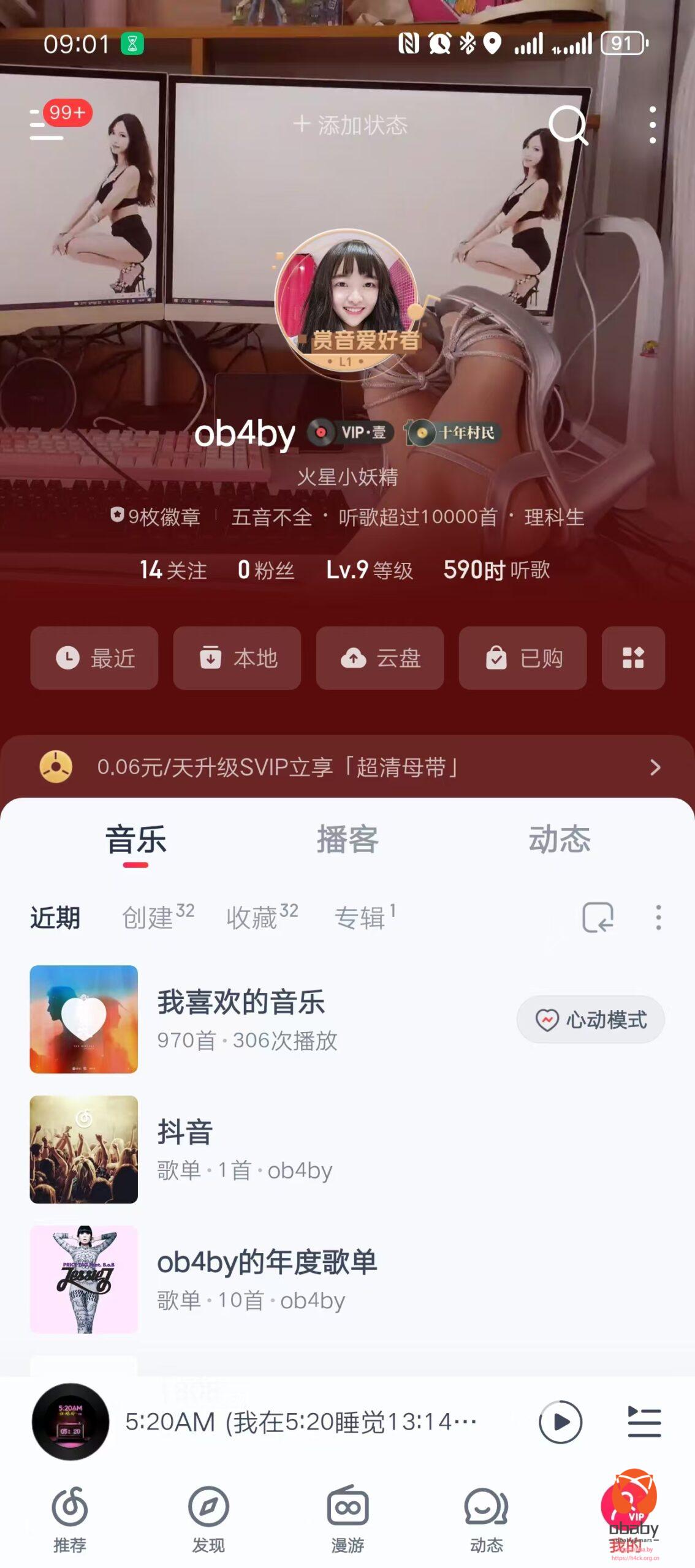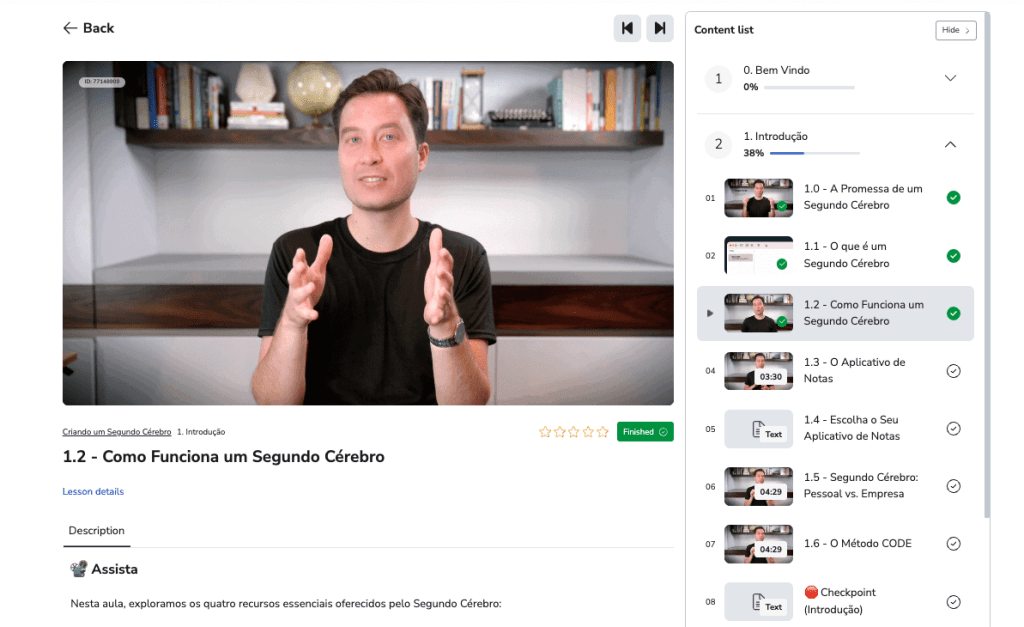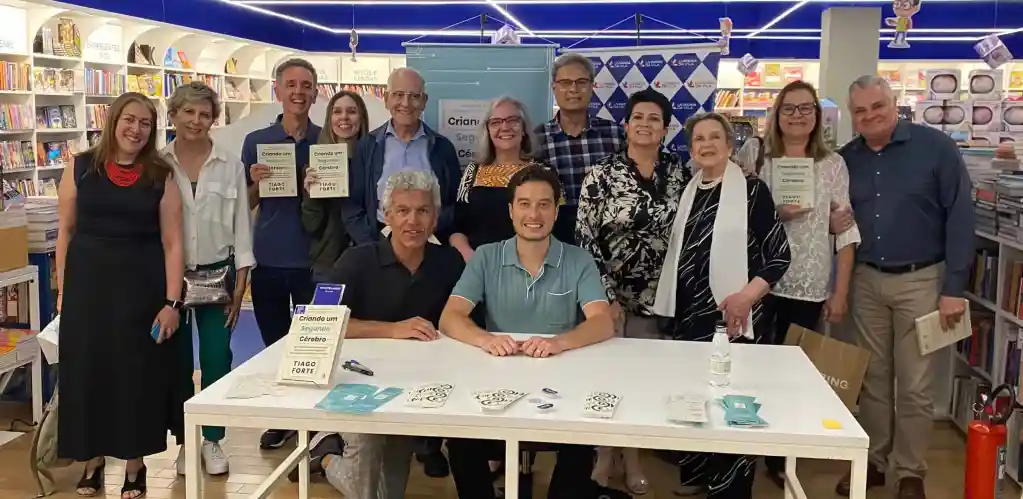I recently published my 2024 Year-In-Review looking back over the events and lessons from last year.
Now it’s time to look forward – to the goals, plans, and intentions my team and I are committing to for 2025.
The theme I’ve chosen for this year is The Year of Profitability, as our financial results were clearly the biggest weakness last year. Among other things, this means we are:
- Making profitability the main filter we use to decide which projects to take on
- Splitting our efforts approximately 50/50 between creating new products and improving our existing ones
- Keeping the team lean and expenses low, with no new hires this year
- Returning to live cohort courses, but in a way that’s more sustainable for me
- Continuing to invest in the Second Brain Membership as our flagship program, and having all roads lead to it from across our ecosystem
I recently sat down with our CFO to identify three numbers that will be our guiding lights this year:
- To break even on a monthly basis, we need to make $67,000 per month
- To reach a 30% net margin, we need to make $105,000 per month
- To limit our labor costs to 40% of our revenue, we need to make $115,000 per month
Rather than waiting until the end of the year to check on these numbers, I’m going to be keeping a close eye on them every month.
With these criteria in mind, here are the main projects we’ve decided to move forward with.
2025 Projects
Launch an official BASB Notion template
After years of requests, we’ve decided to finally create an official Second Brain Notion template! Notion has continued to prove itself as the preeminent knowledge management platform in the world and is the only one to have truly broken out into the mainstream culture.
We are gathering early feedback from our Second Brain members as well as outside Notion experts to come up with a template that is simple and maintains your focus on what matters, which is putting your ideas to use.
Write the Annual Review book
I sold the proposal for my next book in April 2024, and have spent the 9 months since intensively researching every aspect of year-end reviews. I’ve collected and reviewed hundreds of sources, from historical precedents for this practice going back thousands of years, to psychology studies proving the value of self-reflection, to surprising stats indicating that setting New Year’s Resolutions is actually very effective…as long as you do it a certain way.
I officially concluded the “research” portion of the book in early February, and am now working on the manuscript, which needs to be more or less finished by summer 2025, with rounds of editing continuing into the fall.
If all goes according to plan, I’ll open preorders for my new book next spring, and it will be released around November 2026. From everything I’ve researched and discovered so far, this practice is going to change many lives, and I can’t wait to publish the definitive guide for it.
If you don’t want to wait so long, check out the self-paced edition of my Annual Review program, which includes many of the ideas and techniques that will be featured in the book.
Produce more implementation-focused YouTube videos
Although our YouTube channel is technically an ongoing “area of responsibility” rather than a one-time project, we are making some changes to how we make videos this year.
Specifically, I’m noticing that the rapid proliferation of AI is starting to commodify many kinds of content. Now that you can hit “auto-summarize” and get a step-by-step summary of a video in seconds, without even having to watch it, the value of the typical “listicle-style” video is declining. We’re going to switch to more implementation-centric, “coaching” style videos, as I think viewers will increasingly want to know the “how,” not just the “what.”
We will also be publishing a range of annual-review-related videos this year to start building interest and momentum for the release of my book in a little less than two years.
Launch our own app and upgrade the Second Brain Membership
It’s been so gratifying to watch the Second Brain Membership flower over the last year since we launched it to the public in spring 2024. Up until then, it had been a private community only for alumni of our cohorts, which meant that it went completely dark for months at a time.
Once we decided to stop offering live cohorts, it made sense to turn that community into an always-on program that runs all year long.
This year I’m excited to share that we are upgrading to Circle Plus, which will enable a range of new features in our community for communication, collaboration, and engagement. The one I’m most excited about is that we are getting our own app! That means instead of asking people to “join our Circle community” (who the heck knows what that means?!) our call to action will be to “Download our app” on Apple’s App Store or the Google Play store.
This move will make the Second Brain community a more prominent and accessible part of our members’ digital lives – a place they can go to whenever they have something to share or something they want to learn.
Debut an official BASB certification
My book Building a Second Brain continues to sell around 10,000 copies each month worldwide, which has produced a constant stream of inquiries and requests for coaching, consulting, or contract work related to Personal Knowledge Management, from individuals to large companies. But as a tiny team, we’re not set up to service those needs.
That’s why we’ve decided this year to pursue creating an official BASB certification, which will qualify graduates of our courses in the knowledge and skills needed to help others build a Second Brain. I’m hoping this will kick off a thriving marketplace of practitioners and service providers as an extension of our products and books.
Create a new AI cohort-based course
Since early 2023 I’ve been contemplating whether and how I could teach a course on AI. The need was overwhelming and clear, but where I had much more doubt was as to my role.
What knowledge or perspective did I uniquely have to offer in the rapidly evolving AI space? What kinds of skills could I teach people that would remain relevant beyond the next model release? How could I leverage my background, experience, network, and skills into a program that was impactful while also being sustainable?
I’ve wrestled with these kinds of questions a lot over the last couple of years, and although the pace of innovation hasn’t slowed down, I’m finally starting to catch glimpses of some answers.
My point of view on AI is that it is not primarily a technological challenge – it is a historical, cultural, psychological, ontological, epistemological, societal, educational, governmental, intra and interpersonal, economic, and ultimately spiritual revolution that is going to change everything about our world.
I believe that adapting to AI isn’t just a matter of learning some tactics and tools – it will require a deep and fundamental reimagining of who we are, what our purpose is as humans, what it means to live a productive and fulfilling life, and how we conceive of our place in the universe. In other words, it is a holistic, overarching transformation, not a narrow technical one.
Taking on that perspective, I can begin to see how my way of thinking can help people. I can draw on my knowledge of history to surface lessons from past technological revolutions, my facility with moving between cultures to borrow ideas and ways of being, and my propensity to think holistically and in terms of principles to give people firm guidance amidst a roiling sea of change.
I don’t know exactly what this new course will look like, but I do know it will seek to give people fundamental training in the mindset and skills they need to thrive in the AI era. More to come soon!
Host an Annual Review immersive
For the last 7 years, we’ve taught a live virtual program guiding people through completing a year-end review. In 2025, we’re taking that program on the road! Toward the end of the year, we’ll invite a small group of people to our new hometown, Valle de Bravo, Mexico, to participate in a multi-day, immersive experience.
The details are still to be determined, but I intend to make it the most impactful, transformational experience possible, bringing together everything I’ve learned and discovered about how to make this yearly ritual a paradigm-shifting milestone in people’s lives.
We will also of course continue to offer the online program so as many people as possible have a chance to get support in their review process.
If you want to stay updated on any of these projects, subscribe to our newsletter below:
Open questions
Here are the open questions I’m holding for this year:
1. How can I make irreversible decisions to preserve my willpower?
As I wrote in my 2024 year-in-review, I was astounded at how the single decision to move our family to Mexico led to multiple other intentions seemingly naturally falling into place. I can still hardly believe it, and I want to continue looking for other examples where such a principle might also hold.
Instead of having to create a whole project to individually pursue each goal I have, what are other moment-in-time decisions I can make or actions I can take that allow me to feed two (or more) birds with one scone?
2. What experiences do I want to have with Caio and Delia over the next 10–15 years, while they’re small?
One of the most surprising aspects of becoming a parent is that from the moment the kids are born, you are presented with a complete timeline of their lives, and therefore yours.
You know at approximately what age they’ll begin walking, talking, and going to school. You know when they’ll be in each grade, what kinds of travel and experiences they’ll be ready for, and when they’ll start having friends and wanting to hang out with them instead of you.
You know when they’re likely to leave home, which means suddenly you can predict the window in which you’ll probably spend 90% of all the time you will ever spend with them, which is before the age of 18.
My kids are 2 and 4, which means they’ll finish elementary school in 2031/2033, middle school in 2034/2036, high school in 2038/2040, and college in 2042/2044. I’ll be 46 when Caio finishes elementary school in 2031, 53 when he finishes high school in 2038, and 57 when he graduates from college in 2042.
I don’t know why, but these dates completely blow my mind! 2042 is only 17 years away – I remember 17 years ago like it was yesterday! I graduated college myself that year, which means I am already halfway between my own college graduation and my son’s.
Human lifespans keep getting longer, but the window of time we have to spend most intensively with our kids stays the same. Which means that, as a percentage of our lives, our time with our kids is actually shrinking in a way. “Childrearing” is therefore increasingly no longer a lifelong activity, but a discrete stage of life preceded and followed by many other stages.
All of this makes me want to be very intentional about how we spend those childhood years. I know I want to expose them to as many sports, musical instruments, forms of art, cultural experiences, social situations, spiritually transcendent moments, etc., as I possibly can.
I want to immerse them long-term in at least two cultures – Mexico and Brazil – so they feel deeply rooted and connected to that aspect of their heritage. I know I want to go on many great adventures with them, having precious moments of depth and intimacy, discovering their limits, inventing new things, seeking new frontiers, and tasting everything life has to offer.
I feel far more commitment and determination around these intentions than any business goal, honestly, which leads me to conclude that all my decisions in the business need to be geared to creating the right conditions for what I consider these much more important moments with my family.
3. What does my jealousy of other people tell me is missing in my life?
One of my favorite indicators of what is missing from my life is what makes me jealous of others.
These days I feel an intense jealousy toward highly fit, middle-aged dads. I don’t know how they do it. It’s not primarily the outward markers of abs and a slim figure I’m jealous of, but the internal sense of dignity and self-respect they must feel when they look in the mirror. That is what I’m after, and exercise is going to be the main focus for my personal goals this year.
I’ve already noticed that my attitude toward exercise has to be different living in a rural town versus a dense suburb. It’s not about how many times I can hit the gym, or how many intensive exercise classes I attend. It’s about taking advantage of built-in opportunities to move, from hiking in the mountains we’re surrounded by, to meeting up with other dads in the afternoon for paddleball, to fitting in quick bodyweight workouts whenever I can.
4. What would it look like to pivot BASB toward AI?
When generative AI first exploded into the mainstream a few years ago, I assumed it was the end of the Second Brain methodology I had spent years developing. If anyone could sign up for an AI chatbot that “knew” the entire Internet, why would they spend the time and effort to curate and build their own personal knowledge base?
But as time passes, I’m beginning to think that maybe AI is not a replacement for the Second Brain, but its true fulfillment.
People still need to read, take notes, learn, and express themselves even with the aid of AI tools. The “context” you bring to any interaction with AI matters more than ever. There are still many reasons it’s worth storing your favorite ideas, stories, insights, and memories in a private place that only you control.
Maybe, just possibly, AI is going to make the process of building a Second Brain much easier and more accessible to more people, which means the demand for my work might go up instead of down. Maybe I was early to the rise of intelligent software, and am now poised to take advantage of my reputation and experience and teach people how to use it.
This line of thinking is sparking a lot of new ideas for me, which I will be exploring in the coming year.
Here are other open questions I don’t even have the beginnings of an answer to, but I notice fill me with a sense of curiosity and wonder:
- How can I integrate more anger work into my life and work?
- How could I explore and understand my relationship to food this year?
- What is the bottleneck in my thinking or behavior that is leading to poor financial results in the business?
- What is the business that gives me more of the life I want now?
- How can we bring service into our family life?
- What is a hobby I can be passionate about, that’s hands-on, that I can do with Caio in Valle?
- What is the kind of work that our new home and lifestyle are best suited to?
- How can I balance book-writing with all the new initiatives and projects I want to take on this year
- How can we have other people generate new ideas using their energy and enthusiasm, instead of continuing to rely on me
- What role does the blog play now that I’m not writing as much, and our web traffic is declining
- How do we make our community bottom-up instead of top-down?
- What would it look like to make Forte Labs a platform for others?
- How can I be the kind of leader and manager who inspires people to greatness without me needing to be there?
How I want to spend 2025
As the years pass, I’m increasingly finding that it’s more useful to define exactly how I want to spend my days, as a substitute for goals. Goals have the tendency to require a lot of suffering and sacrifice in the short term, which paradoxically means the more ambitious they are, the worse my life becomes!
As I turn 40 in a few months, I’m not interested in sacrificing current pleasure in order to arrive at a far-off destination anymore. I did that in my 20s so that I would have the life I have now!
Here are the ways I’ve decided I want to spend my time in 2025, to bring me the happiness, peace, and joy I’ve worked so hard for:
- Visiting various gardens, parks, and museums around Valle with the kids—being outside or exploring new places with Lauren and the kids, combining quality family time with exploration, discovery, learning, and fun in a physical setting.
- Playing with the kids at home—being physical and wrestling with them, especially in contrast to watching TV.
- Spending time in person, in deeply immersive and intentional spaces, with fellow entrepreneurs and creators I know and trust and want to get to know better—helping me feel seen and accepted and connecting on a more personal level, rather than only through my work.
- Meeting and connecting with people who are passionate about the same ideas and possibilities, like at my conference, meetups, or elsewhere—I feel like such people are “on the same wavelength” and resonate with how I see the world.
- Deep reading and writing for many hours at a time with no other commitments for the day—getting to this level of flow is one of the most deeply gratifying experiences, soothing my soul while also making me proud of the progress I’ve made.
- Working on long-term, large-scale, highly novel creative projects—these make me feel like I’m not wasting my time with a bunch of trivial, forgettable projects, but something that matters and that expands who I am and what I’m capable of.
- Immersing myself in unusual, novel, complex environments that fully absorb my senses, pull me into the present, and teach me things about myself and the world. For example, museums, new countries and cities, nature, and even online—these environments make me feel embodied and expansive, versus stuck in rumination in my head.
- In deep, intimate conversations with people I find interesting, receptive, and self-aware—whether dinners with other couples, coffees with new acquaintances, or spontaneous encounters with strangers in public—these conversations feel profound, curiosity-provoking, moving, like I’m discovering someone else while also discovering aspects of myself at the same time.
If anything I’ve written here resonates with you and you see a way we could work together, don’t hesitate to reach out at hello@fortelabs.com.
Follow us for the latest updates and insights around productivity and Building a Second Brain on X, Facebook, Instagram, LinkedIn, and YouTube. And if you’re ready to start building your Second Brain, get the book and learn the proven method to organize your digital life and unlock your creative potential.


















